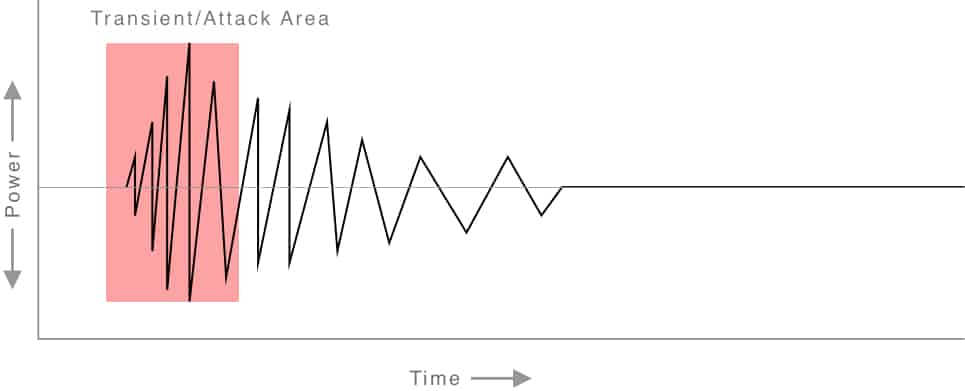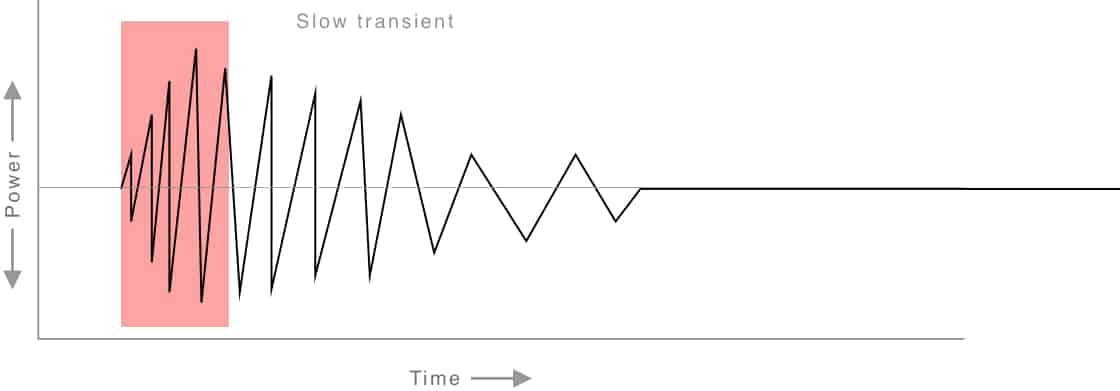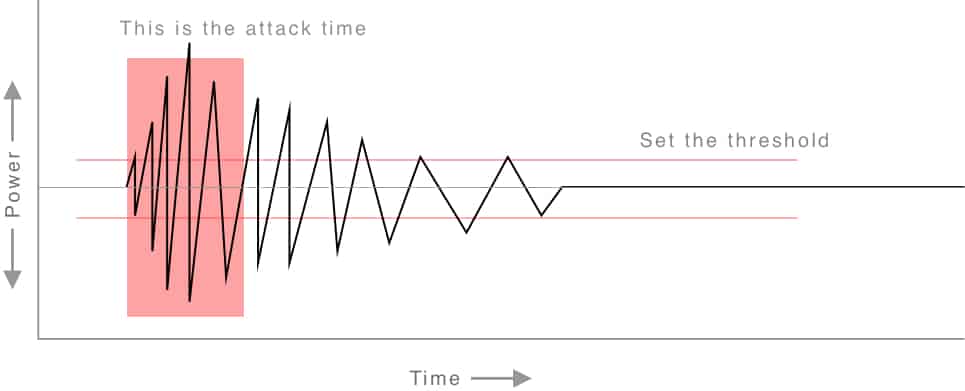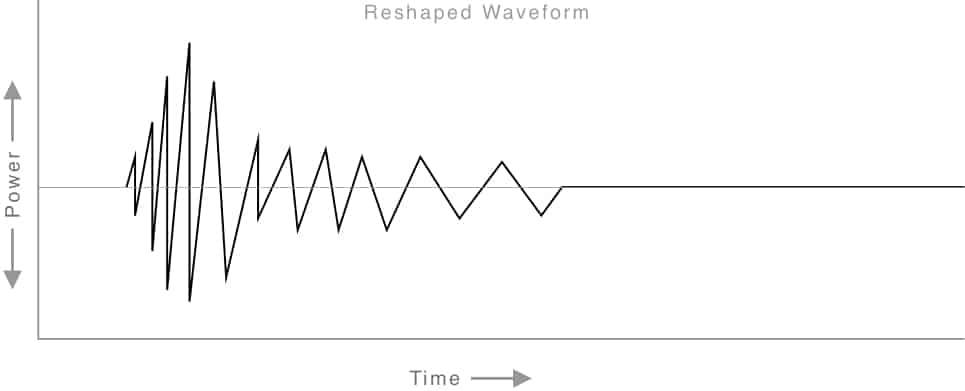Slap, Punch, Transients, Compressors, Oh my!
We’re spending the next few weeks looking at compressors...
Punchy punchy punchy! This compressor is punchy! That compressor is punchy! Compressor X will make your mix punchy! Compressor Y adds that vintage punch! Yada yada yada!
Today, we dissect PUNCHY, how compressors make things punchy, and what you can do with a compressor to control punch. So, a bunch of theory, not a lot of history, some videos, and a thing to try towards the end.
What is Punch
Punch, as we hear it, is sort of a physical quality to a sound or instrument. It tends to cut through the mix and it tends to be bright. There might be almost an audible “click” to the sound. Punchy basses and kick drums kind of hit you in the chest at louder volumes. Punchy tracks are energetic.... I can’t describe this... argh!!
Punch = Transients"
Punch is connected to and comes from the transient of a signal.
A transient is the initial attack of a waveform. The attack, or transient, is the area of a wave envelope when the sound of the instrument goes from no signal to as loud and as powerful as it will ever be.
Big words. Don’t worry about it. You’ve seen waveform envelopes on your DAW, they look like this:

The attack, or transient, is that highlighted spot at the beginning.
The faster and louder the transient, the more punch a signal has. Drum and percussion transients are very fast and loud, so drums are usually punchy.
Bowed instruments have very slow attacks so that is why you’ll never hear an engineer say, “Wow! What punchy strings!” Bass and guitars have a very variable attack depending on if they’re played with a pick (pretty fast) or fingers (pretty slow). A slapped bass, however, has a very fast transient.
Vocals tend to have slower transients. However, certain consonants have fast transients—T, D, B, K, P. Consonants in general have shorter attacks than vowels, which are typically slow. Rap and hiphop vocals typically sound punchy because there is a lot of consonant activity. Vocal parts that are sung more have more vowel activity and thus less transient activity.
Think of it like this: the more it’s like a drum, the faster the transient. The more it is like a violin, the slower the transient.


If there are a lot of fast transients, the instrument or sound will sound punchy. If there are slow transients, it won’t.
How Compressors Make Things Punchier
To go back to our dog on a leash analogy from last week: If we are going to stop the dog from running past 10 feet, the attack would be how fast we pull back on the leash once the dog has gone 10 feet. If we pull it back immediately, that is a fast attack. If we wait a moment and then pull the dog back, that is a slower attack."
Compressors make things punchier by reshaping the waveform a bit. The transient is, basically, made bigger, which makes the sound subjectively punchier.
As you know (and if you don’t know you’re about to find out) a compressor kicks in and starts to work when the signal goes over the threshold you’ve set. Now, the very first part of the signal that goes over the threshold is..... the transient. If the compressor kicks in immediately, then it will start to reduce the gain beginning with the transient.
But what if the compressor doesn’t kick in immediately? In other words, the signal goes over the threshold and the compressor kicks in a fraction of a section after. The transient gets through untouched, the gain comes down after it, and the waveform is reshaped. It looks like this:


This is the basic way a compressor adds or creates punch: it lets the transient through.
The attack time of a compressor is a big determinant of whether or not it is punchy. Some compressors have fixed attack times, others have program dependent attack times or manually adjustable attack times, and some have a combination of program dependent and manually adjustable. But there are other factors.
The ratio can affect punch. Low ratios typically result in less punch—the difference between the transient and the signal following is is less. Higher ratios tend to have more punch. But attack time can affect this: A high ration with a very very fast attack time will not be punchy at all—in fact it will sound dull and dead if it is active on the signal for a long period of time.
Knee is another factor that effects punch. Knee... how to describe knee....
When a signal goes over threshold, the compressor applies gain reduction, which is set by the ratio. If it applies that ratio all at once, that is a hard knee. So, if the ratio is set to 8:1 and the signal goes over threshold, the compressor clamps down at full power, 8;1.
Soft knee compressors or settings gradually apply gain reduction in proportion to how far the signal goes over threshold. So, if a soft knee compressor is set to 8:1, and the signal goes a little over threshold, the compressor clamps down a little, like 1.5:1. As the signal goes up, the compressor hits harder, so the gain reduction ratio increases... 2:1, 3:1, 4:1, etc., until it hits 8:1. Another way to think of it is the compressor is trying to “ride" the gain like you might, with your hand on the fader, pulling the fader down further as the signal gets louder.
Guess which tends to sound more punchy: Soft knee or hard knee?
Hard knee sounds more punchy, because it more radically reshapes the waveform. Soft Knee compressors tend to have very very fast attack times and Opto compressors like the LA-2a have almost instantaneous attack times, as well as a very soft knee. That is why they sound good on vocals and bass, because they “ride” the gain well, but if you put them on drums, they typically dull things up (that doesn’t mean you shouldn’t put them on drums and see what they sound like though).
Making a Compressor Sound Punchy
First of all, some compressors won’t ever sound particularly punchy, like the LA-2a or any of the dbx compressors that are considered “Over Easy,” which is dbx’s term for soft knee. Original dbx 160’s are plenty punchy and sound great on drums. If you have compressor with a switchable knee, setting it to hard knee will usually get you more punch.
Some compressors are punchy no matter what you do. SSL channel strip compressors and bus compressors are wonderfully punchy. Most compressors that are labeled as FET (Field Effect Transistor) are punchy. Our Talkback Limiter is FET, 100:1 ratio, fixed attack time, and is a punch monster.
Compressors that are really good at riding gain and making things sound even are usually not all that punchy. However, if the compressor has an adjustable attack, then it is quite possible to set the compressor to even things out AND increase punch. This explains a lot of the versatility of our Pawn Shop Comp. It is FET and has a really wide range of attack and release settings, which make it adjustable for almost any sort of compression task... and if you set it right it is very punchy... or slappy ; )
Set It Punchy
I hesitate to give exact numbers because setting compressors right isn’t the same as Neo seeing The Matrix for what it truly is."
In audio, everything depends on what you want and the gear you have at hand, so these are just guidelines to get you into the right neck of the woods. USE YOUR EARS!!
Set your RATIO to at least 4:1, or even higher. 2:1 will never be all that punchy, unless you have a ADR Compex, in which case it will always be punchy no matter what you do to it. Feel free to adjust the ratio up or down as you zero in on the sound you want. In some cases, a tiny ratio adjustment can make a big difference.
ATTACK is the key setting here. Ideally, you end up setting it just after the transient gets through. What you’ll find is you can set it fast for things with fast transients, like drums, but as the transient gets slower, you’ll need to set the attack slower. If you think about this for a moment, it should make sense.
Here is my usual way of finding the right attack for punchy sounds.
I set the ratio up there—6:1, 8:1, something like that. I set the release on the fast side so it isn’t interfering with the cycling of the compressor (I’ll cover release time next week).
I set the attack to its fastest speed and then, as I play the track, I gradually set it slower. There comes a point where the instrument or the mix sort of “jumps” out at me, and there it is.
I made three videos—one for drums, one for guitars, and one for the entire mix:
Good lord! Too many words again! I try to write shorter but I want you to know more, I want you to see this stuff in your head.
Anyway—that is it for now and for next week... compressor release times! I am excited about that! It is a weird thing to be excited about, but not if you love making records.

